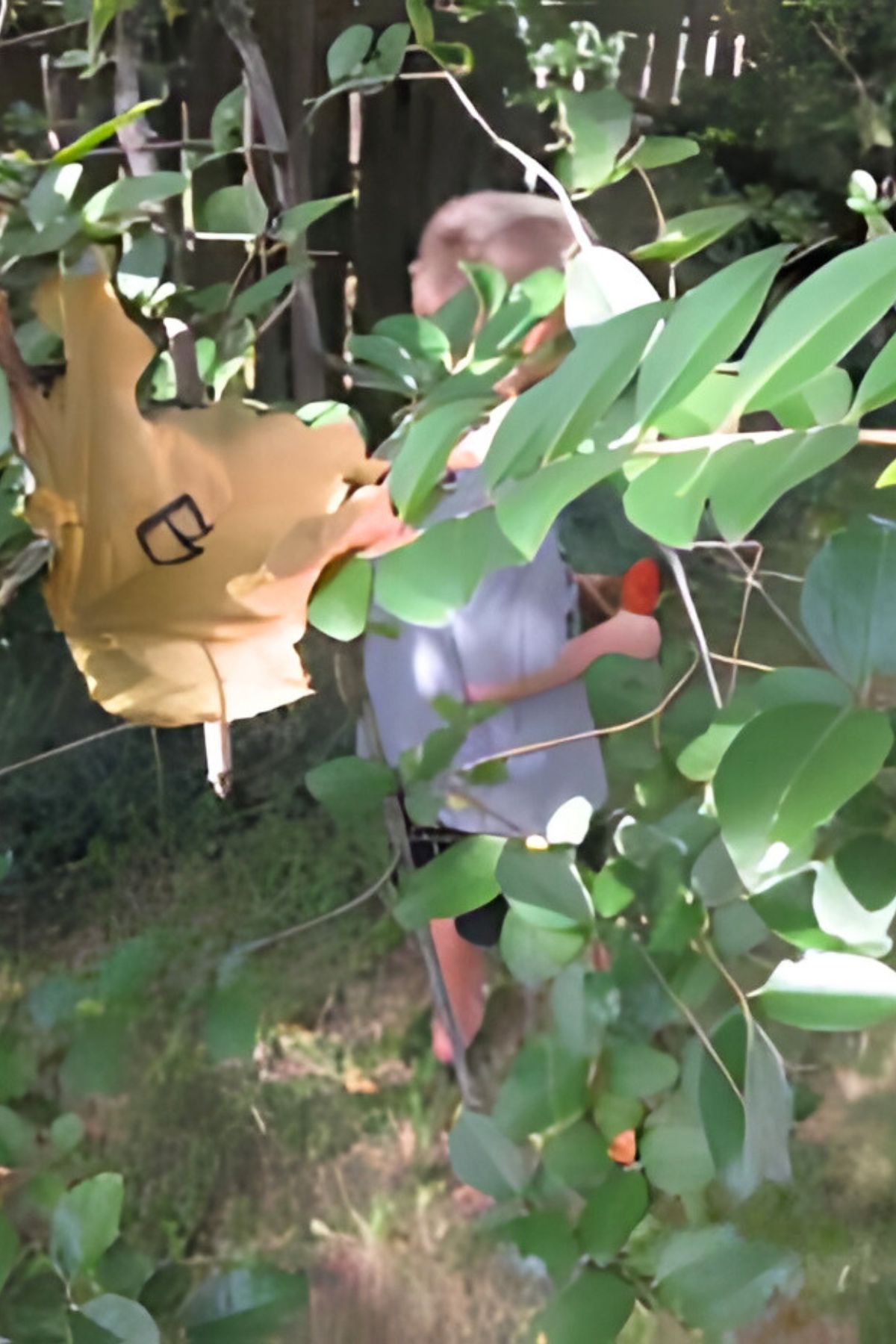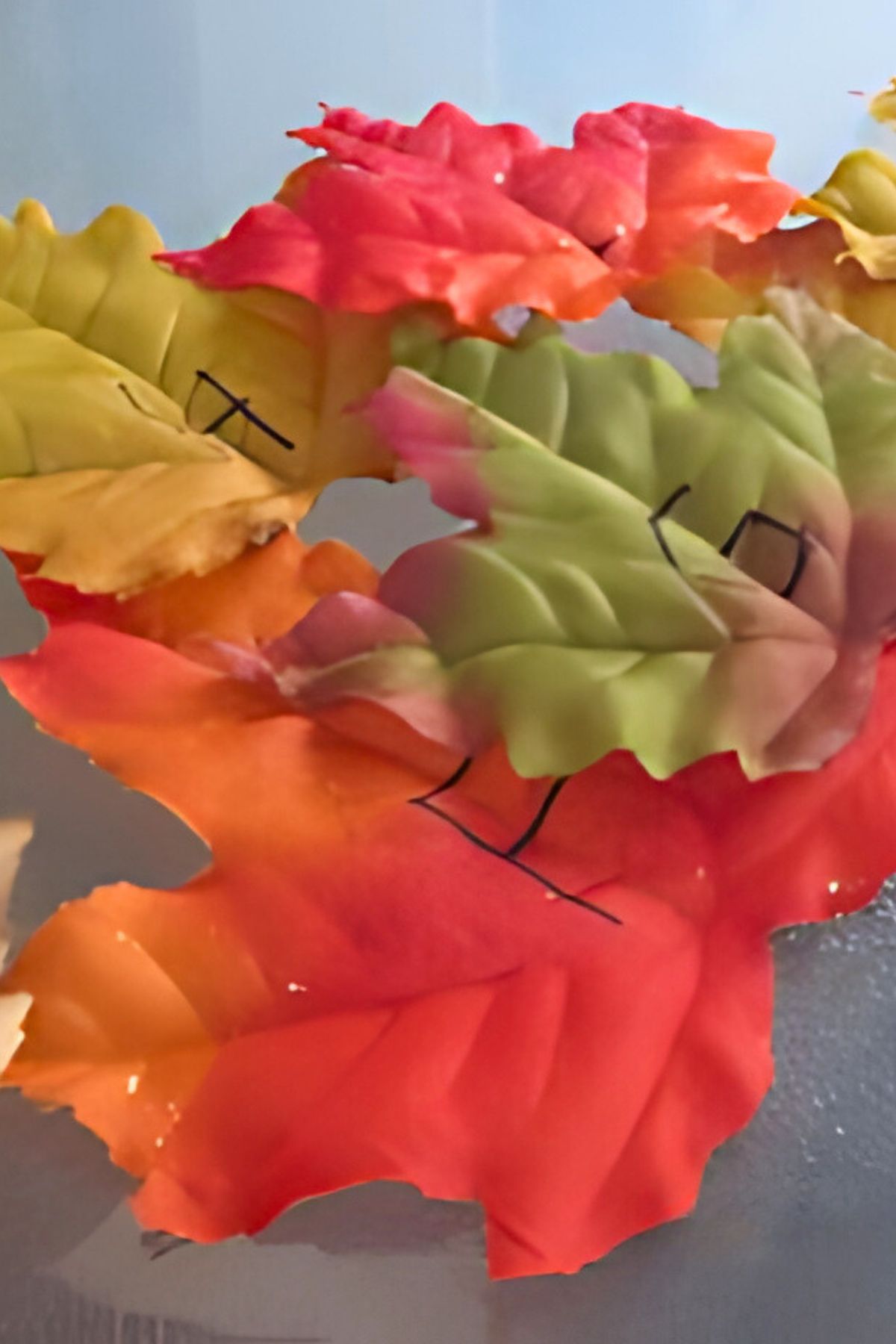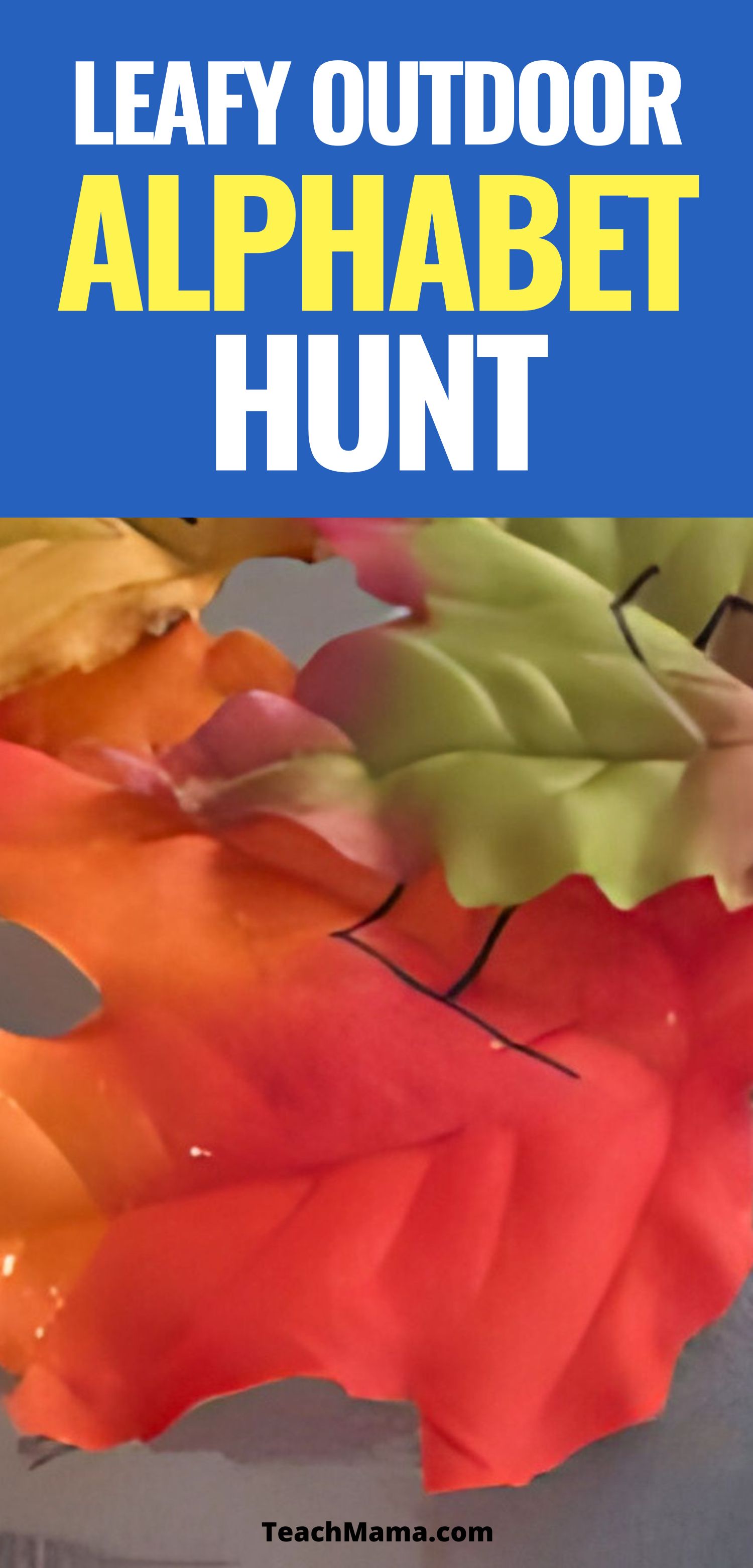This leafy indoor/outdoor alphabet hunt lets kids get into the spirit of Fall with matching letters and colors. Add spelling to the hunt for older kids and the whole family can play!

It’s finally FALL! I hope you are blessed to be living somewhere ablaze with fall color, but if not you can still enjoy a bit of it and add in a dash of learning for your kiddos with this simple and versatile game of hunting for and matching letters.
The Leafy Outdoor Alphabet Hunt is On

Supplies You Will Need
- Fall Color Cardstock (for DIY printed leaves)
- Laminating Machine (to laminate the printed leaves) (You can go to a copy center to laminate but if you want a machine of your own, this one gets great reviews!)
- Silk fall leaves. (These are the ones I like)
- Clothespins (like these)
- Yarn, twine or thin rope to act as a clothesline
- Black marker
Instructions
- Use the silk leaves or DIY print your own printed leaves on fall color cardstock
- Write capital (uppercase) letters on one set of leaves and then the little (lower case) letters on another batch so that there is an A to go with an a and so forth.
- You can also write letters on each of the clothespins if you want another level of matching.
- Put the clothespins on a yarn clothesline your child can easily reach. Whether you put the letters in order or not is up to you and your child’s familiarity with the alphabet and alphabetical order. If the ABC’s being in the wrong order would upset your early learner then by all means don’t do it! The goal of the game is to pair up the upper and lower case letters and clip them on the clothesline with the matching clothespin.
- Then hide the leaves throughout your house or yard like an Easter egg hunt where some are trickier than others to find.

Some Different Ways to Play
- Shout “Go” and then stand back and enjoy the following frantic scramble to find the leaves and pair them up on the clothesline of course, is always fun.
- Put the clothespins in not alphabetical order and have the child rearrange them into correct order as they pin the leaves.
- Hunt for upper then lower case letters separately.
- Give a “fall” word (Leaf, cold, you get the idea) and have them find the letters starting it.
- For older kids, you can add a word hunt activity that will have them combing the house or yard to find the letters. Be sure to choose words that don’t repeat letters!
- If you’re comfortable with your kids combing through your yard for the leaves you could even try that. In a yard full of fall leaves it would certainly add a “needle in a haystack” level of difficulty to the game that might be more challenging and a whole lot of fun.
Make this Game Super Versatile
Personally I think laminating machines are just the best! They can add so much versatility, not to mention durability, to your activities. So if you have one of these little treasures, use our printable fall leaves (download below) to laminate. (This one gets good reviews… mine is too old for reviews!)
Then if you want your child to practice matching something other than their ABC’s you just use your trusty dry erase marker and you’re set. What about matching numerals to the word? (One – 1) Or Numeral/word to amount of objects (5/Five – *****)?
If foreign language is an option, perhaps matching words in the target language to English (cat – gato) In math your child could match common math abbreviations to the word. (km -kilometer or lb -pound) The possibilities are practically endless. And the best part? When you’re done you just wipe them off and they’re ready for the next time you need them!
Lessons Learned the Hard Way
When you’ve printed out the Fall Leaves and colored them to your liking, you may think you’ll save time by laminating the whole page intact … please resist this urge. CUT THEM OUT before laminating them! That way the laminating film seals all the way around the leaf. Otherwise the edges will be open. The film will peal off, the paper will tear, moisture can get in to ruin them. Take it from me, it will just be nasty.
Happy Leafy Letter Hunting!
You can buy silk leaves for this activity or you can grab the download below to DIY your own Leafy Fall Alphabet Hunt!
More Great Reading Help for Parents
- Kindergarten Summer Reading Readiness
- Reading Assessments For Reading Success
- Bedtime Stories Are More Important Than You Think
- Tips For Helping Early Readers
PIN THIS FOR LATER


Leave a Reply